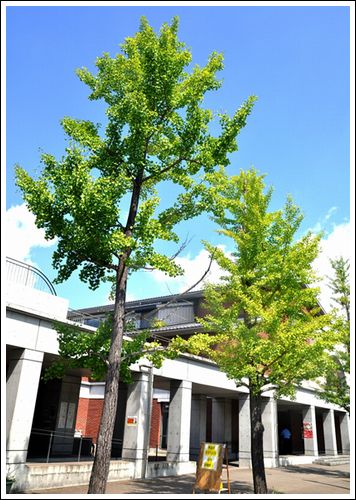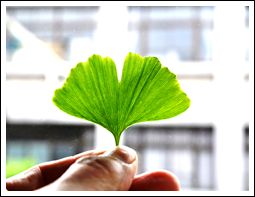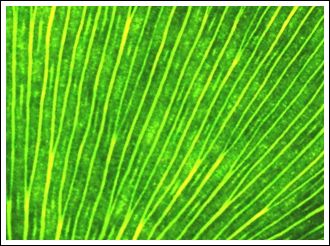 「新型コロナ」の影響で人類の世界ではさまざまな影響を受けていますが、自然界の動植物は例年と変わらない日々を送っています。
「新型コロナ」の影響で人類の世界ではさまざまな影響を受けていますが、自然界の動植物は例年と変わらない日々を送っています。
学内の各所のイチョウ並木も元気いっぱいです。こんな「コロナの時代」だからこそ、日々の生活では目にもとめない身の回りの動植物の奥深さにこそ、意識を向けてみたいものです。
そこで、今回はイチョウの葉の深みに招待します。イチョウの葉をよく見ると他の植物の葉とは違った特徴に気づきます。根元の1本から2本、2本から4本と葉脈が倍増し、末広がりになり、その結果、葉の形が扇形となります。原始的な陸上生物は初め二又分枝する茎のみからできていったと考えられています(シダ植物のマツバランも二又分岐する)。これを「テロム」と言い、その後、茎の間が組織で埋まったものが「葉」とされています(テロム説)。
 イチョウは「生きた化石」とも言われますが、約2億7千万年前の古生代の地層からその祖先の化石が発見されていて、現在見るイチョウも葉脈の中にその原始的特徴をみることができるという訳です。
イチョウは「生きた化石」とも言われますが、約2億7千万年前の古生代の地層からその祖先の化石が発見されていて、現在見るイチョウも葉脈の中にその原始的特徴をみることができるという訳です。
ステイホ-ムで、日常生活の感覚が自宅内に限定されると、意識がすべて単純化してしまいます。身近にあるものを角度を変えてみて、あえて「非日常を体験する」ことも必要な時代に生きているように思います。
みなさんも、オンライン授業で疲れた目を休め、たまには身近な「葉っぱ」に注目してみてください。
 The new Corona Virus has been affecting people in many ways, but animals and plants haven’t been feeling this so much.
The new Corona Virus has been affecting people in many ways, but animals and plants haven’t been feeling this so much.
Around our school, you can see many Ginkgo trees, looking the same as always, so, even in this “Era of Corona”, we should think about the nature around us.
This time, I want to introduce to you the leaves of The Ginkgo. If you look closely, you can see how the veins of the leaf increase as you move from the root. This makes them look like a fan. The reason for this can be explained by using the Telome Theory.
Ginkgo are said to be living fossils, and examples of Ginkgo have been found in rock formations from 270 million years ago, from when they are thought to have developed into their current form.
While you were staying home, did you start to think about things in a different way? Maybe, it’s a chance to discover the “new normal”. Sometimes, you should take a rest and look at the leaves around yourself.



